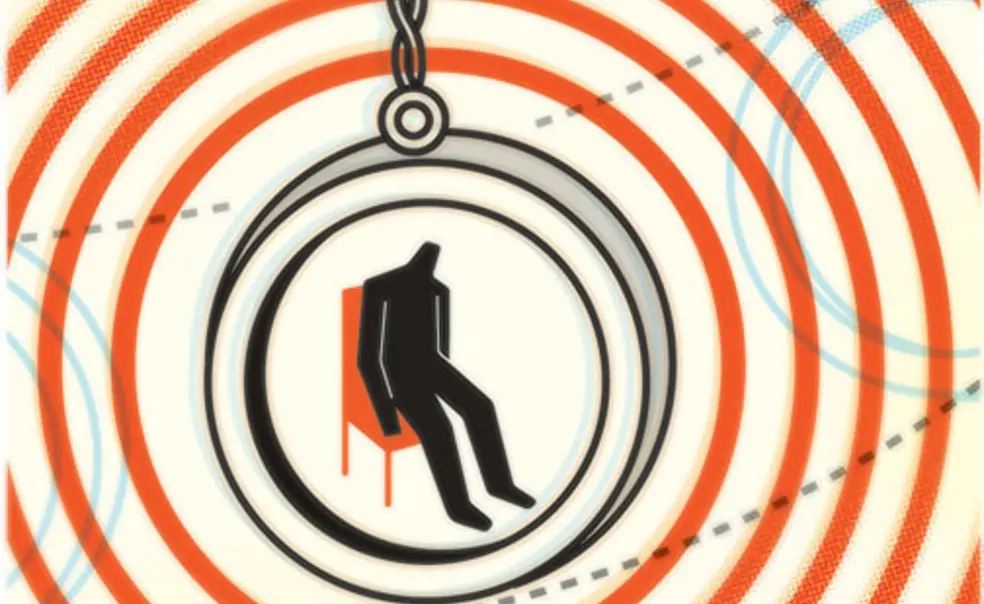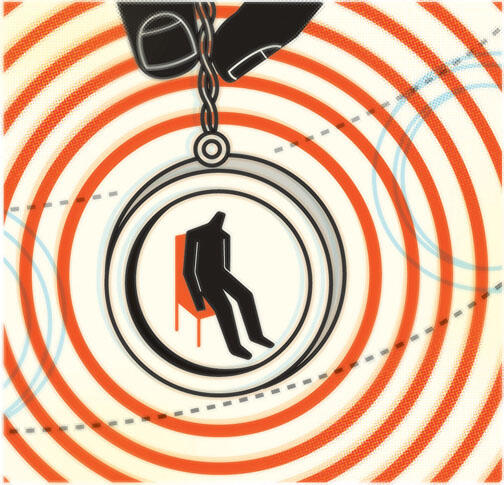Using hypnosis to relax; a lunchtime literary visit
In the late 1700s Franz A. Mesmer claimed a cure for all ills: Placing his patients around a tub of iron rods and “magnetized” water, Mesmer would play songs on a glass harmonica until one of the patients fell into convulsions — a breakthrough indicative, he said, of imminent remedy.
Mesmerism — known more commonly as hypnosis — has evolved. Part therapeutic device, part showman’s trick, the method is the raison d’être of a new Princeton club. Started in October by Peter Hummon GS, the Princeton University Hypnosis Workshop convenes Tuesday evenings in East Pyne. The group aims to educate the University community about hypnotism, train student hypnotists, and help community members cope with personal issues through hypnosis. Hummon is also offering stage hypnosis shows, starting this month.
“Hypnosis does not involve control,” he said, but is “an extremely relaxed state of mind,” akin to guided meditation. Hummon first practiced hypnosis in 2005 and was certified with the National Guild of Hypnotists in 2008.
At a recent meeting, four regular attendees led by Chris Bienia GS practiced hypnosis techniques while Hummon gave a talk to six newer attendees about the basics of the method.
Nikhil Seth ’11, making his second visit to the workshop, volunteered to be hypnotized. Hummon, hand on Seth’s shoulder, asked the sophomore to close his eyes and count down aloud from 100, pausing between each number to slip deeper into relaxation. Seth murmured the numbers, but after only a few, fell silent.
“Ladies and gentlemen,” Hummon announced, “this is a state of deep hypnosis.”
“I couldn’t move my lips,” Seth said afterward.
Some students visit the workshop and leave doubtful. Emad Atiq ’09 volunteered to be hypnotized and said later that Hummon helped him relax — “he’s great as an intellectual masseuse” — but was unable to alter his mental or physical state significantly.
Hummon explained that hypnosis is merely a technique for relaxing the mind and freeing the subconscious. He was unruffled by skeptics: “If I’m able to deflate the bogeyman of hypnosis and people leave here having a better understanding of what hypnosis is and how it can help them, even if it’s 20 years on down the road, then I think this group is well worth the effort.”
By Catherine Mevs ’09
(A correction has been appended to the end of this article.)
Author Jamaica Kincaid, sitting quietly at a table in the Forbes College special dining room, stared at a small group of students gathered to share lunch with her. “Now I’m really thinking deeply,” she said. “I’m almost forgetting you’re in the room.” The students laughed.
Kincaid’s thoughtful silence was brought on by an undergraduate’s detailed question about the theme of melancholia in the writer’s works. She is best known for her novel Annie John, a fictionalized account of her childhood in Antigua; her essay “A Small Place,” on the legacy of colonialism; and her writings on gardening.
The lunch took place a few hours before Kincaid was to appear at a public gathering in McCosh 10 to read from her nonfiction collection Talk Stories and a fictional work in progress. Students’ questions ranged from dealing with critics to the modern politics of Antigua and Barbuda to her childhood aspirations. “When I was young, I always wanted a strong voice, so that you would know it was me,” Kincaid said.
This made a strong impression on Tao Goffe ’09, who was excited to learn about Kincaid as an artist. “I think that she’s really the most important American writer,” said Goffe, co-editor of Prism, a student literary magazine with an emphasis on diversity. “She’s at the heart of American culture.”
The students were part of a reading group led by Jose Emmanuel Raymundo, postdoctoral research associate and lecturer in African American studies, who knows Kincaid from his time as a doctoral student at Yale. Raymundo and the Forbes College director of studies, Patrick Caddeau, organized the visit.
“Aside from a big lecture, we wanted there to be a strong undergraduate component to the activities,” Raymundo said. Having students read and discuss Kincaid’s work in advance helped cultivate what he called a “community of readers.”
While several students said they were familiar with one or two of Kincaid’s works, Goffe said Kincaid was “a staple in [her] household growing up.” She said the author’s frequent laughter and easygoing manner were a pleasant surprise. “She seems very critical in her writing, but she’s actually very accessible,” Goffe said.
--------------------------
For the record
The original version of this article incorrectly reported the title of Jose Emmanuel Raymundo.













No responses yet